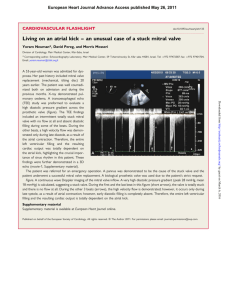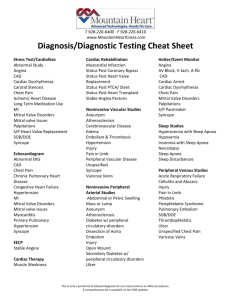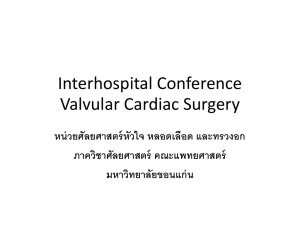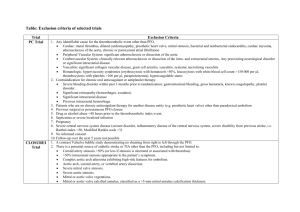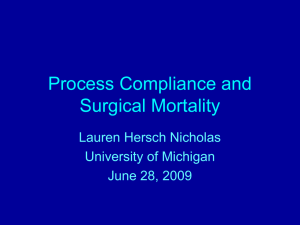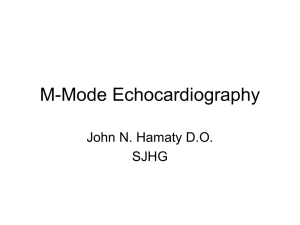Mitral Valve Repair XII - Promedica International CME
advertisement
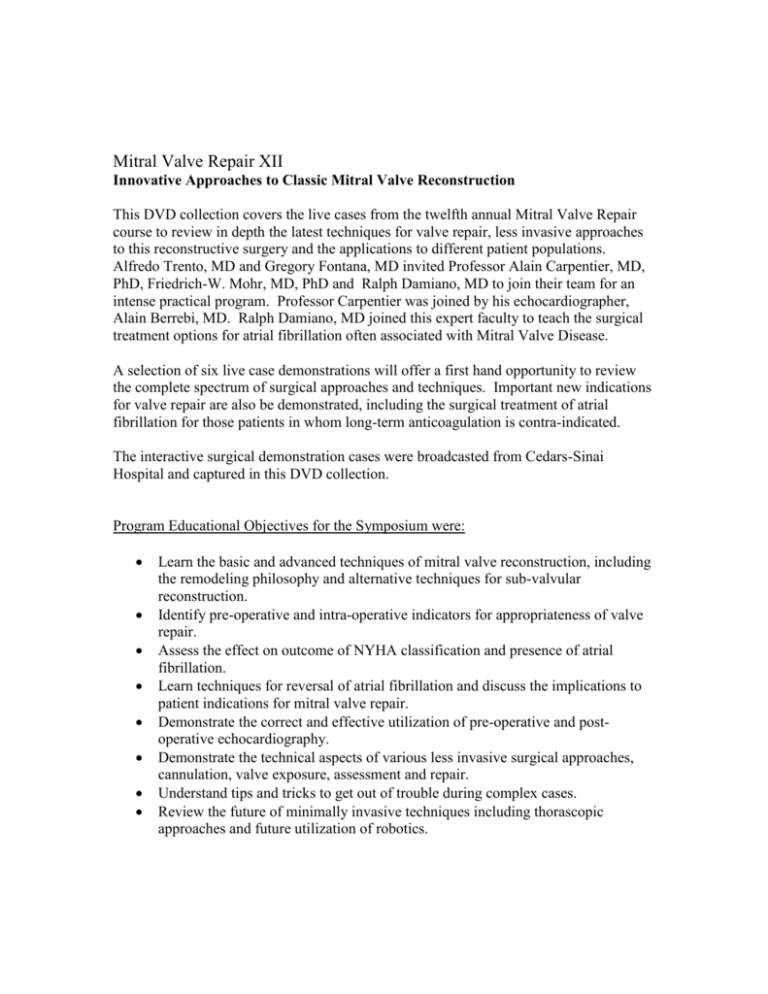
Mitral Valve Repair XII Innovative Approaches to Classic Mitral Valve Reconstruction This DVD collection covers the live cases from the twelfth annual Mitral Valve Repair course to review in depth the latest techniques for valve repair, less invasive approaches to this reconstructive surgery and the applications to different patient populations. Alfredo Trento, MD and Gregory Fontana, MD invited Professor Alain Carpentier, MD, PhD, Friedrich-W. Mohr, MD, PhD and Ralph Damiano, MD to join their team for an intense practical program. Professor Carpentier was joined by his echocardiographer, Alain Berrebi, MD. Ralph Damiano, MD joined this expert faculty to teach the surgical treatment options for atrial fibrillation often associated with Mitral Valve Disease. A selection of six live case demonstrations will offer a first hand opportunity to review the complete spectrum of surgical approaches and techniques. Important new indications for valve repair are also be demonstrated, including the surgical treatment of atrial fibrillation for those patients in whom long-term anticoagulation is contra-indicated. The interactive surgical demonstration cases were broadcasted from Cedars-Sinai Hospital and captured in this DVD collection. Program Educational Objectives for the Symposium were: Learn the basic and advanced techniques of mitral valve reconstruction, including the remodeling philosophy and alternative techniques for sub-valvular reconstruction. Identify pre-operative and intra-operative indicators for appropriateness of valve repair. Assess the effect on outcome of NYHA classification and presence of atrial fibrillation. Learn techniques for reversal of atrial fibrillation and discuss the implications to patient indications for mitral valve repair. Demonstrate the correct and effective utilization of pre-operative and postoperative echocardiography. Demonstrate the technical aspects of various less invasive surgical approaches, cannulation, valve exposure, assessment and repair. Understand tips and tricks to get out of trouble during complex cases. Review the future of minimally invasive techniques including thorascopic approaches and future utilization of robotics.
